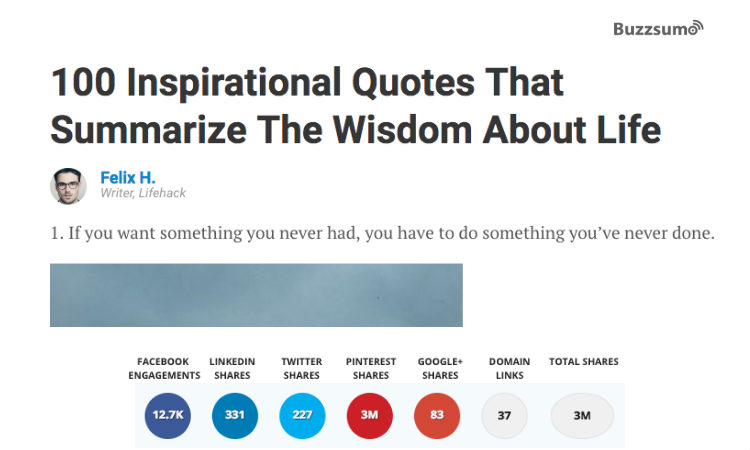Use these 9 Tips to Go Viral with Contagious Content
| May 25, 2017 | Posted in Content Creation
Going viral is a phenomenon amplified by the current technology and social media landscape. ShareProgress defines ‘going viral’ as an effect of sharing content. Their definition reads, “Every time one person engages with your website or watches your video, they share and get at least one other person to visit the site.” Every person brings in at least two more visitors. That math means that traffic on your website or video will jump dramatically. Many marketers wonder how to make viral content. The question to ask is what entices visitors to share your content with their friends and family? Make your content desirable to share, and you have a greater chance of going viral.
Here are our top recommendations for creating contagious content.

Produce quality content on a consistent basis.
The only way you can go viral is if you have content for visitors to share. Regardless of the type of content, you should strive for quality over quantity. Figure out how long it takes you to develop great content, and stick to that schedule.
With organic reach down on many social networks, especially Facebook, marketers are turning toward promoted posts. But if you promote mediocre, click-bait content repeatedly, there’s less of a chance the visitor will share it or even click on your post the next time they see you in their feed. First, make sure a piece of content is worth it, and then focus your budget on promoting that piece.
Utilize images.
Did you know that images on Facebook get 2.3 times more engagement than other types of posts? Using high-quality images is one of the best ways to attract interest in your content. Just be sure to follow these best practices. Make the image relevant to the content, and make sure the image could stand alone. Many people will only look at the photo, not the accompanying text. Plus, when it’s shared, your text will become even more difficult to locate. The picture should have all the information the viewer needs to understand your content.
Leverage emotional responses.
People are drawn to share content that elicits an emotional response. Whether happy or sad, if a person feels strongly about something, they will be more likely to share it with others. Popular emotional hooks include:
- Inspiration or happiness
- Inducing the ‘aww’ reflex
- Making the visitor laugh
- Scaring or warning the visitor
- Covering a controversial topic
- Surprising the reader with new information
Scientific American studied viral content and came up with some solid conclusions.
“What our findings mean for practical purposes is that if you’re trying to create content that will make a big splash, making the message positive is likely to help, and emotionality is key. Of course, more interesting, practically useful and surprising content is also more likely to go viral.”
Viral Examples
This Youtube video currently has over 23 million views. It made viewers laugh, and many probably shared with friends and family to make others laugh as well.
This blog post from 22 words went viral by providing surprising information backed by science. It received over 2.8 million shares on Facebook.

Credit: Buzzsumo
Write a compelling headline.
A well-written headline will make someone want to click on your content. This study by Conductor found that most readers prefer a headline that uses a number, doesn’t go overboard with superlatives, and capitalizes only the first letter in each word. Another popular strategy is to personalize the headline, using words like ‘you’ and ‘your.’
If you look at a site known for viral content, like Buzzfeed.com, you’ll see that the majority of their headlines are framed this way.
Post the content when people are most likely to see it.
If you’re posting or promoting content on social media, it’s vital to post at the correct time of day to reach the most people. This varies based on the specific social media platform, your target audience, and the region you’re based in. That being said, you have to start somewhere while you narrow down what times work best for you. Hubspot curated the best times to post on various social media platforms to get the most engagement.
Their overall findings suggest that the best times to post for each platform are as follows. Keep in mind that your unique content and audience may develop different patterns, so regularly analyze when your content is getting the most engagement.
- 12pm-1pm on weekends
- 3pm-4pm on Wednesdays
- 1pm-4pm on Thursdays and Fridays
- 12pm-3pm Monday through Friday
- 5pm-6pm on Wednesdays
- 7:30am-8:30am, 12pm, and 5pm-6pm on Tuesdays, Wednesdays, and Thursdays
- 10am-11am on Tuesdays
- 2am-4am every day
- Every evening
- 5pm on Fridays
- 8pm-11pm on Saturdays
- Any time Monday through Thursday, except 3pm-4pm
Make it easy to share.
Most of your audience knows how to share your content from various social media platforms, but is it easy to share the content directly from your website? Make sure your blog posts, pictures, and videos have social sharing links that are easy to find and use. Read more about integrating social media into your website here.
Know your audience.
One of the keys to going viral is to target a specific audience with your content. Finding that niche for your buyer personas will help you create content that truly resonates with a visitor. If you know what they like and what issues are important to them, then you can craft content that grabs their attention.
Another tactic is to tag influencers that your target audience already follows. These influencers have a significant amount of authority to your target audience. If they recommend or share a product, then their followers will be much more likely to trust and engage with your content. Send your content directly to the influencers, tag them on social media, and even ask if they want to contribute to the content.
Reference current trends or issues.
If you gear your content around relevant topics, whether that is pop culture or politics, you have a greater chance of visitors sharing your content. If a topic is trending that ties in well to your message, create content based upon that current event. Resist the urge to jump on the bandwagon if the trend truly doesn’t make sense to your brand.
Viral Examples
A fan-favorite viral example is this tweet by Oreo during the 2013 Super Bowl game.
Power out? No problem. pic.twitter.com/dnQ7pOgC
— Oreo Cookie (@Oreo) February 4, 2013
The stadium experienced a blackout and Oreo was quick on the trigger to create a tweet that referenced this current event. It paid off, with over 10,000 retweets within an hour, according to AdAge.
Create content in a format that visitors like to engage with.
Different types of content are best suited to different formats. But one of the most tried and true formats for greater engagement is the classic list post. This ties back to using numbers in your headlines. People like lists.Other content formats that rank high in popularity include:
- Quizzes
- Stories
- Insights based on research
- Practical tips
- Curating content from multiple sources
Buzzsumo created this table after researching some of the most viral content of the year to help other marketers achieve more shares. It’s a great starting point for creating content that is contagious.

Credit: Buzzsumo
Viral Examples
This blog post from LifeHack went viral with over 3 million shares. It combined the popular list format, with curated content and images for each quote.

Credit: Buzzsumo
Key Takeaways

Most content never goes viral. But by using the above tips for how to make viral content, you can still see measurable increases in your content’s engagement statistics. Let us know in the comments what types of content are most popular on your website and social media pages!

